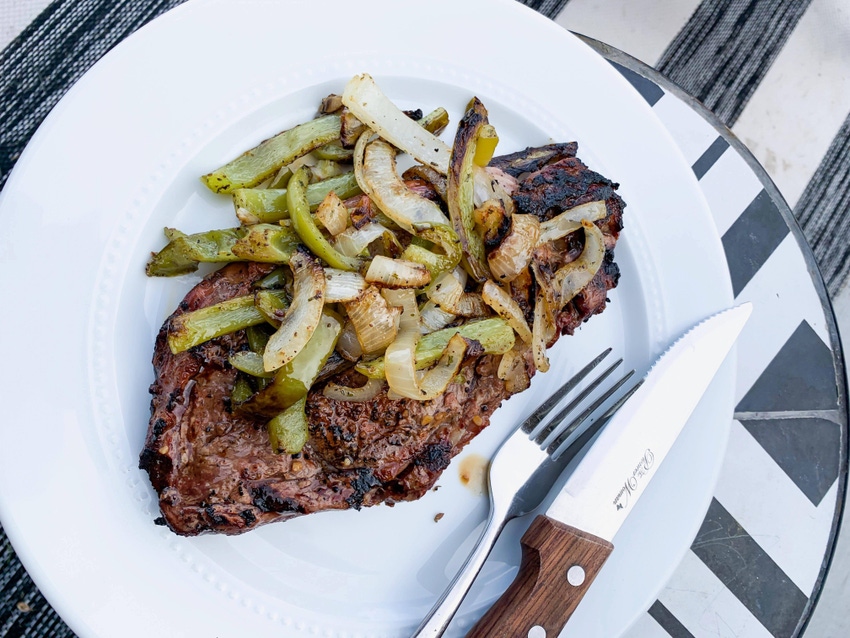A new consumer survey reveals how the pandemic has impacted shopping habits and what opportunities there might be to boost beef demand.
December 11, 2020

This year has brought many changes for all Americans. The pandemic has shifted the way many of us think, behave, shop, work and spend our time.
As an example, much of society has transitioned from the typical hustle and bustle of work meetings, social events, traveling and shopping in retail stores to working from home, virtual learning with our kids, ordering groceries online and canceling our social events.
So how does this changing dynamic impact how we promote beef? And meet the needs of consumers right where they are at?
Instead of talking about steakhouses or beef jerky on the go, we are focused at offering tips for cooking beef at home and making recipes that kids would like to eat during their virtual school days.
For a brief time, we got a reprieve from debunking myths about cow farts. Instead, we had the chance to focus on timely questions like food safety, buying beef in bulk and connecting with producers when there were shortages in the meat case at the grocery store.
I’ve written several blogs on how my family has approached reaching consumers during this pandemic, and if you missed them, you can check them out here:
In addition to what producers can do individually with their own voices, time, talents and stories through social media posts and efforts in their own communities, the Beef Checkoff has also been studying ways to reach consumers during a pandemic.
A new report assesses the impact of COVID-19 on consumer behaviors. Titled, “State of the Consumer,” this report was conducted by the National Cattlemen’s Beef Association (NCBA), a contractor to the Beef Checkoff, and highlights the opportunities and impact of COVID-19 on beef demand.
According to an NCBA press release, “The impact of the pandemic has been transformative in every corner of our economy,” said Buck Wehrbein, 2020 NCBA Federation Division Chair. “The good news is that consumers are choosing beef more often as they adapt to cooking more at home.”
Here are some key findings from the study:
Online ordering for both groceries and meal ordering is likely here to stay. It is expected online ordering and delivery will grow at a more rapid pace than originally projected due to COVID-19. Beef. It’s What’s For Dinner., managed by NCBA, will continue to complete first-of-its-kind exploratory e-commerce marketing campaigns to help the supply chain accelerate the sales of fresh beef in this rapidly changing environment.
Consumers are cooking more meals at home now than prior to COVID-19. This means they are searching for information to help them cook meals at home. Though expected to continue for the short term, a long-term shift is difficult to assess. NCBA will continue to utilize a variety of techniques by pushing out cooking information and recipe inspiration through digital, social media and traditional media platforms and leveraging impactful, high-profile influencers or thought leaders to teach consumers how to cook.
Consumers are spending more time at home and online than prior to COVID-19. Along with that comes the rise of more TV and moving-streaming platforms and the decline of in-person movie theater watching experience, which could signal a long-term shift in consumers using more media “inside of the home” compared to “out-of-home.” NCBA will continue to utilize a variety of marketing platforms to continuously reach the consumer through paid, earned and owned digital, social and traditional media platforms.
Currently, consumers are more focused on spending their money on essential needs, such as groceries, household supplies and personal care and cleaning products. This will likely adjust back at some point; it is just a matter of when. NCBA, as a contractor to the Beef Checkoff, will continue to look for opportunities to remind consumers that beef is the classic comfort food that they want as the centerpiece of their dinner, especially as we move into the holiday season.
Positive consumer perceptions of beef and beef production increased during the pandemic and will likely remain higher for the next several months. Consumers may return to expressing concerns about food production when focus evolves from current concerns. NCBA will continue programs that educate consumers about beef production.
You can read the full study by clicking here.
The opinions of Amanda Radke are not necessarily those of beefmagazine.com or Farm Progress.
You May Also Like



